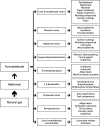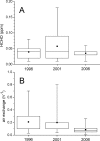Formaldehyde in the indoor environment
- PMID: 20067232
- PMCID: PMC2855181
- DOI: 10.1021/cr800399g
Formaldehyde in the indoor environment
Figures

















References
-
- Walker J. F.Formaldehyde; Reinhold Publishing Corporation: New York, 1964.
-
- Roffael E.Formaldehyde Release from Particleboard and Other Wood Based Panel; Forest Research Institute Malaysia: Kuala Lumpur, 1993.
-
- Kerns W. D.; Pavkov K. L.; Donofrio D. J.; Gralla E. J.; Swenberg J. A. Cancer Res. 1983, 43, 4382. - PubMed
-
- Swenberg J. A.; Kerns W. D.; Mitchell R. I.; Gralla E. J.; Pavkov K. L. Cancer Res. 1980, 40, 3398. - PubMed
-
- SCHER.Opinion on risk assessment on indoor air quality; European Commission: Brussels, 2007.
LinkOut - more resources
Full Text Sources
Other Literature Sources

